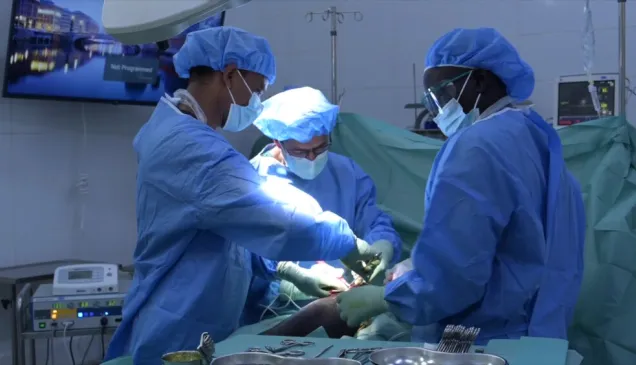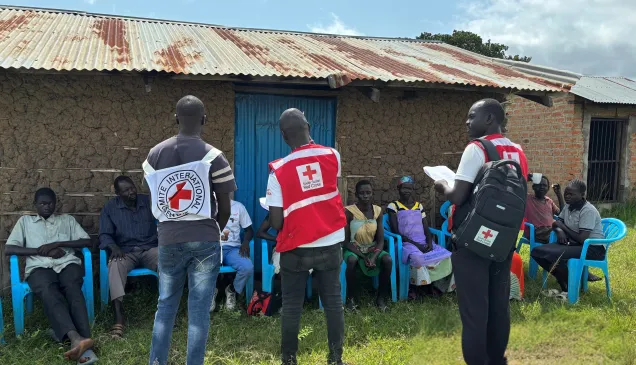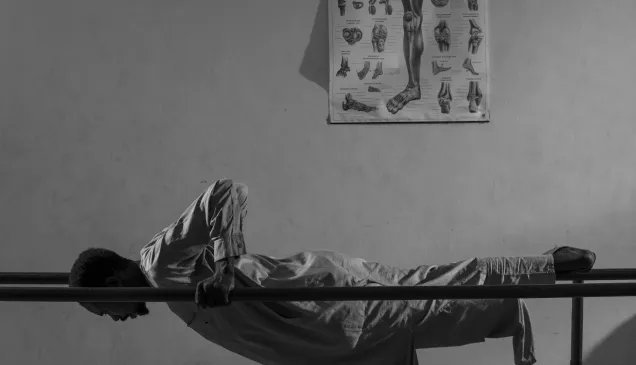The phone rings on a Friday afternoon. The ICRC’s contact on the ground in Torit, a town in the south of the country, has requested an evacuation of three children wounded by gunshots. They need to get to a hospital for surgical care and there is no way for them to travel by road. Many roads are inaccessible during the rainy season due to flooding.
Evacuations, a vital lifeline for gunshot wounded South Sudanese
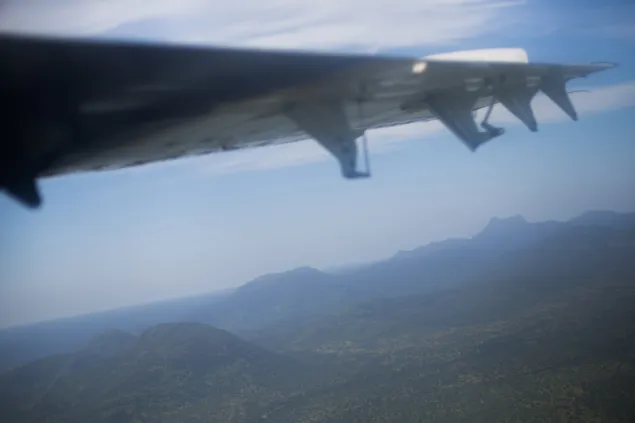
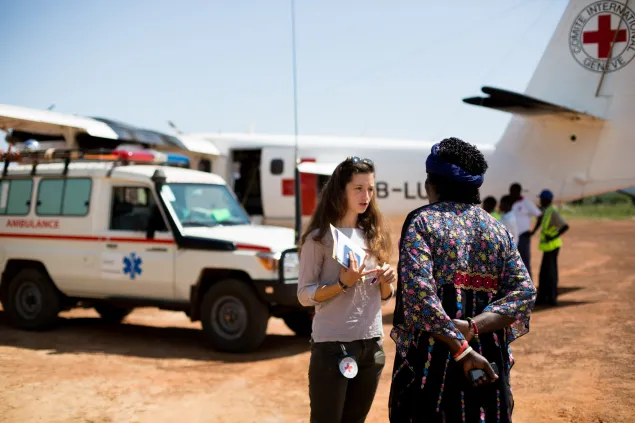
The ICRC team travels to Torit early the next morning. Clara Buelhoff, an ICRC field delegate, is coordinating with the local authorities in Torit. Her job is to ensure safe access for the ICRC plane and that the patients are ready at the airport when the flight arrives.
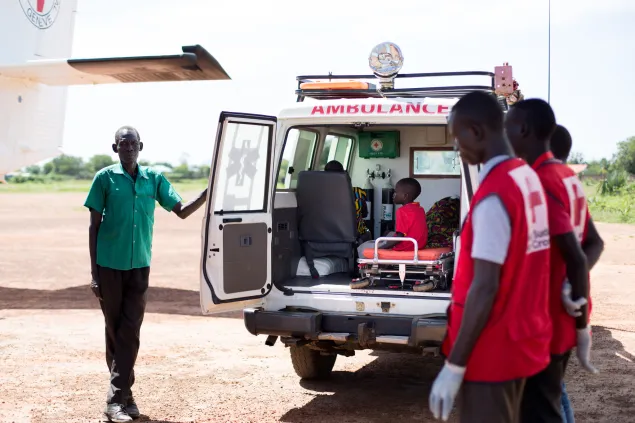
Volunteers from the South Sudan Red Cross are assisting in transporting the patients from the medical centre in Torit to the airport. The volunteers are instrumental in translating and explaining to the patients what is happening.
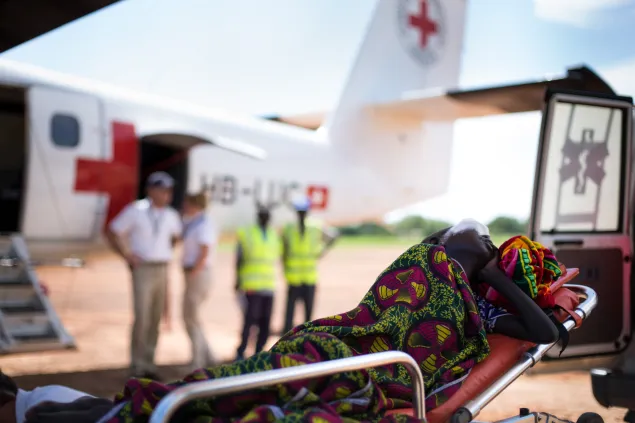
The three children are siblings – two boys and a girl. The middle boy was shot in the eye and is very sick when he reaches the airport.
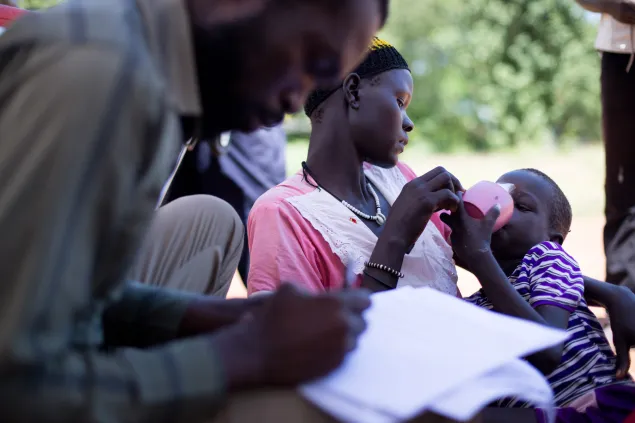
The mother gives water to her son before they board the ICRC plane.
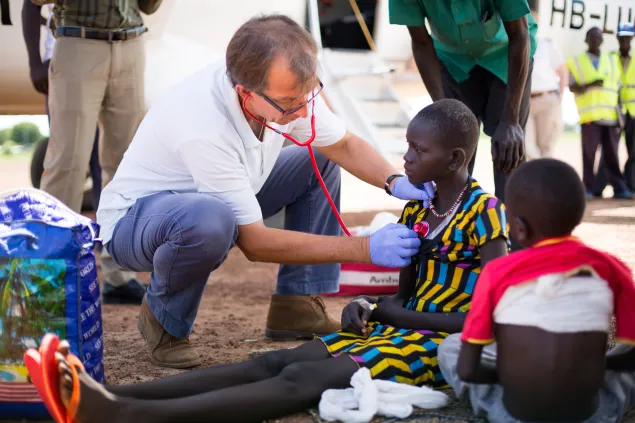
“Give me a deep breathe. In. Out,” says Konstantin Dzhans. He is an ICRC surgeon working at the Juba Military Hospital where the children will get medical treatment. The girl has a bullet lodged in her chest. She can however still walk and communicate with the surgeon. Every medical evacuation must be done with medical personnel who can ensure continued treatment of the patients.
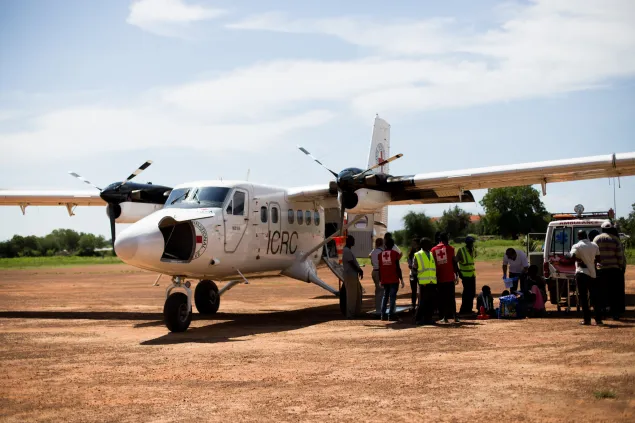
In 2017, the ICRC has surpassed the total number of medical evacuations done in 2016. We carried out 834 medical evacuations across South Sudan, while the total for 2016 was 471.
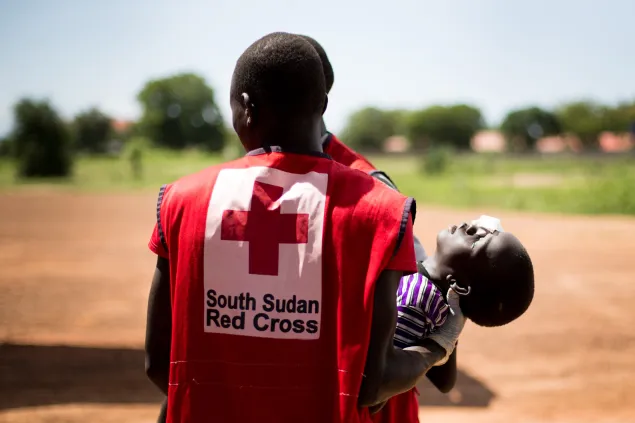
Volunteers of the South Sudan Red Cross carry the injured boy to the ICRC plane.
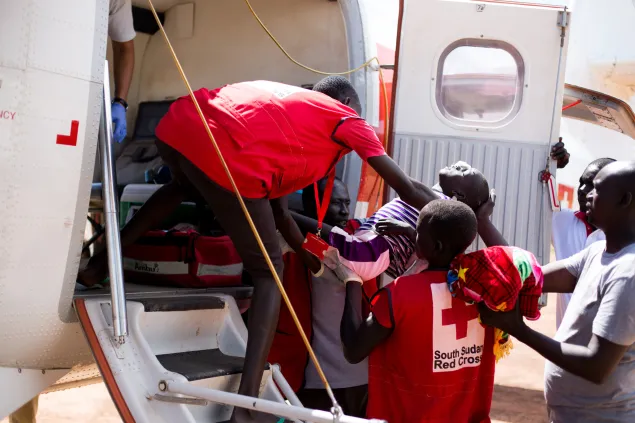
Many people help to ensure that the boy is safely boarded onto the plane. The vast majority of the ICRC medical evacuations in South Sudan are done by either plane or helicopter.
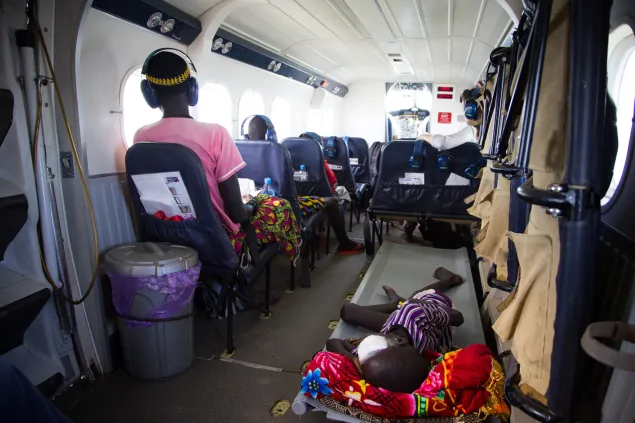
The ICRC plane can carry patients sitting up or laying down on a stretcher. The boy is too weak to sit so he sleeps through the first flight of his life.
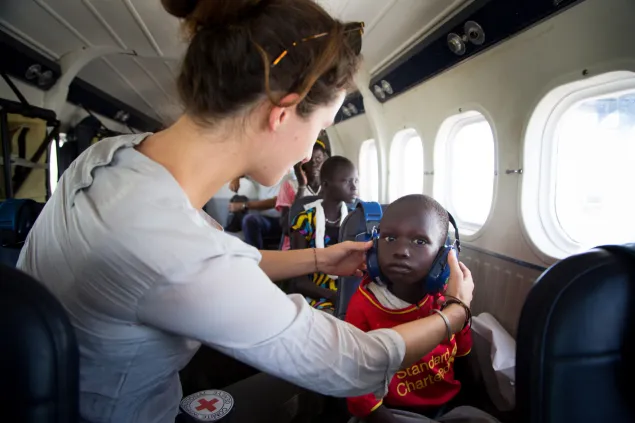
The youngest boy has a superficial gunshot wound in his shoulder. He is evacuated as his two siblings are travelling with their mother and he must stay with them. Clara helps him adjust the headset to muffle the sound of the plane.
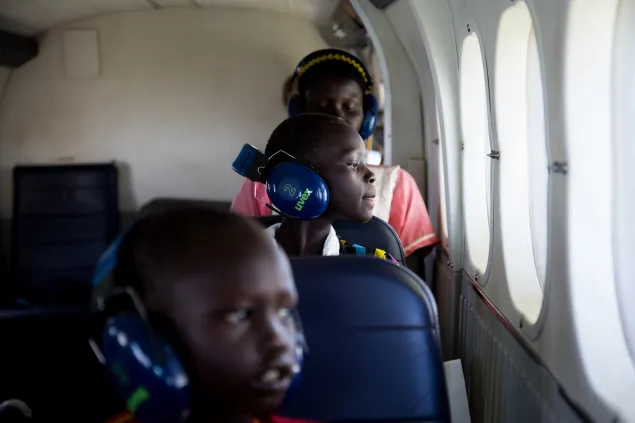
First time in a plane.
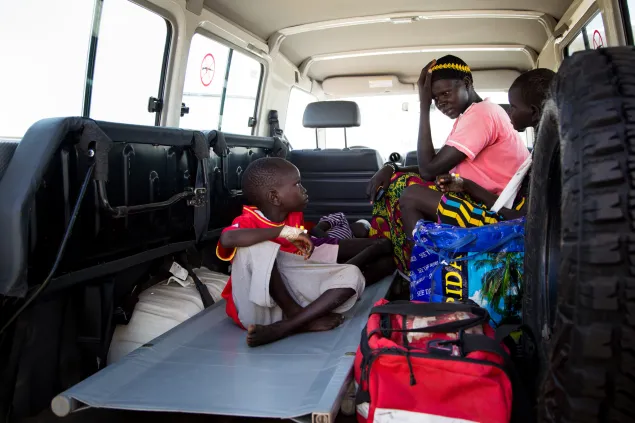
CC BY-NC-ND / ICRC / Mari Aftret Mortvedt
Finally in Juba, but not yet at the hospital. The stretcher is transported to an ambulance which is ready and waiting for the patients. The mother travels with the children to get treatment by the ICRC medical personnel working at the Juba Military Hospital.
South Sudan is among the countries in the world with the poorest access to health care. Coupled with the ongoing conflict, many people are unable to reach hospitals or medical clinics to get treatment.
This year, ICRC-supported hospitals in South Sudan have received and treated a significantly higher number of wounded people compared to the same period last year. In 2017 our teams carried out 834 medical evacuations, more than the total number in 2016 which was 471.
The ICRC evacuates weapon wounded people across South Sudan and brings them to hospitals so that they can receive medical care.
*UPDATE: The number of evacations has been updated in January 2018 to reflect the total number recorded in 2017.

